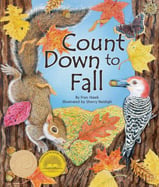Alignment to Standards for ND

| Grade | Number | Standard |
|---|---|---|
| 1 | SC-1.1.3 | Describe different ways that things can change (e.g., size, mass, color, movement) |
| 1 | SC-1.3.2. | Identify observable properties (e.g., size, weight, shape, color, movement) of objects |
| 2 | SC-2.3.3. | Sort matter by observable properties (e.g., size, shape, texture, color) |
| 2 | SC-2.4.1. | Identify how plants and animals are alike and different (e.g., in the way they look, in their behaviors) |
| 2 | SC-2.4.2. | Identify various things that are found in different environments (e.g., cactus, lizard _ desert; shark, coral- ocean) |
| 2 | SC-2.5.1. | Describe the patterns and characteristics of the four seasons, and how these changes in weather influence plant, animal, and human |
| 2 | SC-2.5.2. | Identify different physical properties (e.g., size, shape, texture) of earth materials (e.g., rocks, sand, water) |
| 3 | SC-3.1.1. | Identify changes that are repetitive (e.g., seasons, day and night, water cycle) |
| 3 | SC-3.4.1.¾ | Identify parts of an organism that have specific functions (e.g., roots absorb water, heart pumps blood) |
| 4 | SC-4.4.1. | Classify plants and animals according to common physical characteristics |
| 4 | SC-4.4.2. | Identify adaptations that help plants and animals survive and grow in their environment |
| 4 | SC-4.4.3. | Identify behaviors of animals as instinctive or learned |
| 5 | SC-5.5.5. | Identify the objects in the sky that have predictable patterns of movement (e.g., sun, planets, moons, stars) |
| 5 | SC-5.7.2. | Explain ways humans benefit from Earthês resources (e.g., air, water, soil, food, fuel, building materials) |
| K | SC-K.1.2. | Identify things that can change (e.g., weather, people, water) |
| K | SC-K.3.1. | Identify the materials that make up an object: rubber, and plastic) |
| K | SC-K.4.1.¾¾ | animals eat plants or other animals for food |